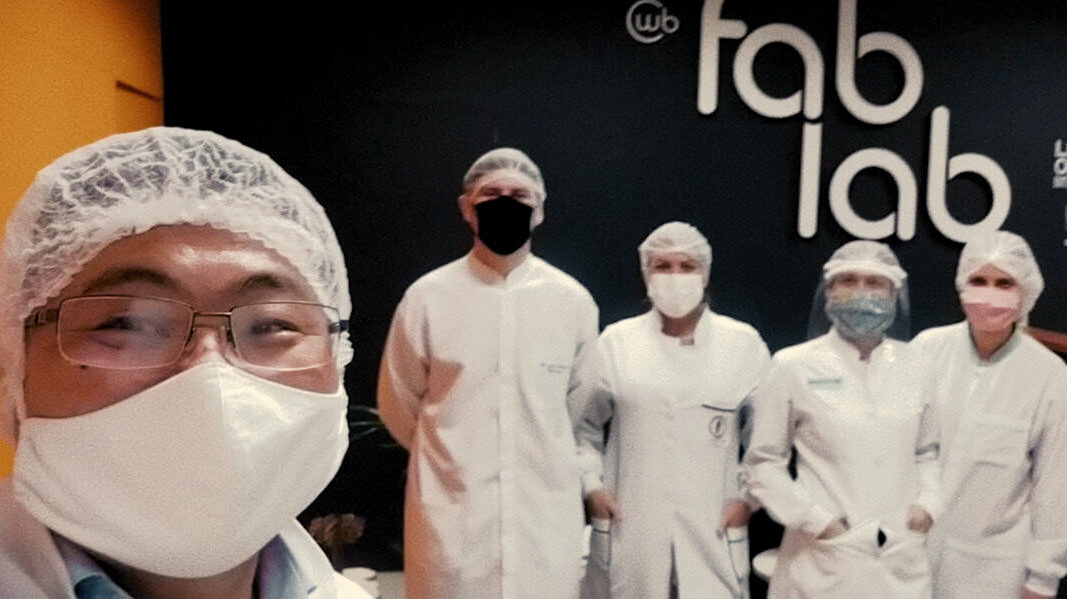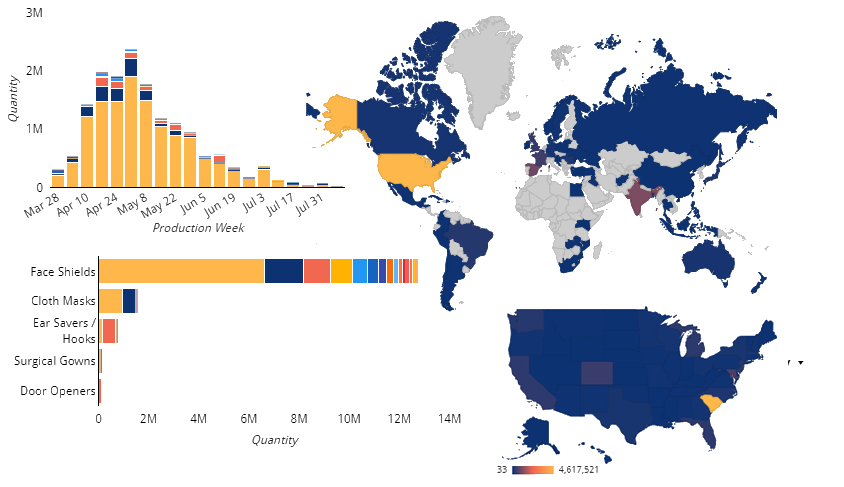Introduction
In any emergency, the best response is local. However, before you stand up a local manufacturing response in your community, find out how Open Source Medical Supplies can help and what considerations you should take before jumping in.
Our Shared Mission And Priorities
The novel coronavirus disease, COVID-19, has been classified as a pandemic as it continues to spread globally in an exponential fashion. Significant shortages of necessary medical equipment and supplies are occurring as the demand for these items increases and interruptions in the global supply chain increase.
Fundamental supplies facing shortages include personal protective equipment (PPE) such as gloves, goggles, surgical masks, face shields, respirators, gowns, and disinfectant, as well as the equipment required to treat critically ill patients, such as ventilators and oxygen concentrators. The lack of supplies poses a threat to both patients suffering from COVID-19 and the healthcare and social service workers treating them. Needs range from hospitals requiring hundreds of thousands of items per day, to rural clinics in need of basics, to vulnerable individual community members and essential workers.
Open Source Medical Supplies (OSMS) urges makers, crafters and professional fabricators alike to utilize their production capabilities to produce the supplies and equipment so desperately needed in their communities, in the global fight against COVID-19.
Culture and Approach
As we all work together to tackle COVID-19, there is a need for an open-minded, thoughtful and collaborative response. From our experience, the best teams function by embracing a culture where:

of his colleagues at the Curitiba FabLab in Brazil.
OSMS Resources

- Open Source COVID-19 Medical Supplies Facebook Group, an international community forum for over 70,000 people to discuss and exchange information about designs, opportunities, and organizing strategies.
- OSMS Project Library, a compendium of over 100 open source PPE and medical device designs curated by a team of medical advisors.
- OSMS Medical Supply Guide, a downloadable version of the About COVID-19 Guide, Project Library, and FAQ in one easy to share document.
- OSMS Local Response Network, an affiliation network and map of over 800 local response groups working across over 60 countries.
- OSMS Global Production Dashboard, the interactive visualization of production data collected from OSMS affiliate groups once a week in the OSCMS Facebook group.
- OSMS Guides for Home Health Care, Schools, and Holidays, helpful, comprehensive resources for living in the time of COVID-19.
Stay abreast of OSMS progress by joining the OSCMS Facebook Group and following us on Twitter, Instagram, and YouTube: